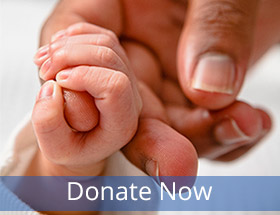Full media release
MAKING PROGRESS AGAINST
RADIOTHERAPY-INDUCED SIDE EFFECTS
Toronto, ON
(August 29, 2012) - In the largest international study of its kind, Sunnybrook
researchers highlight the need for more study in the area of RINV (radiotherapy-induced
nausea and vomiting). Despite estimates that as many as 80% of patients
undergoing common radiation treatments may develop RINV, these symptoms are
significantly understudied, compared to nausea and vomiting from chemotherapy.
"Our
goal is to encourage radiation oncologists to discuss the potential for RINV
with each other, and with their patients," says lead author Dr. Kristopher
Dennis, a radiation oncology fellow at Sunnybrook's Odette Cancer Centre who conducted the study
under the supervision of Dr. Edward Chow, Professor of Radiation Oncology,
University of Toronto, and Head of the Rapid Response Radiotherapy Program in
the Department of Radiation Oncology at Sunnybrook's Odette Cancer Centre.
RINV worsen
patients' quality of life and can lead to treatment delay or refusal. Depending on the anatomic area being
targeted, patients are determined to have a high, moderate, low or minimal risk
of developing RINV according to risk estimates and guidelines produced by the
American Society of Clinical Oncology and the Multinational Association of
Supportive Care in Cancer.
The study,
published online in the International Journal of Radiation Oncology, Biology, Physics included responses from 1,022
practicing radiation oncologists from 12 countries, to a web-based patterns of
practice survey developed in collaboration with clinician researchers from
around the world. It represents the first peer-reviewed published data
describing international patterns of practice in the management of RINV.
Study
findings show radiation oncologist risk estimates of RINV and their subsequent
decisions on how minimal and high-risk patients should be managed were in line
with guidelines. However, for low and moderate risk patients who represent the
majority of patients undergoing radiotherapy, risk estimates and management
decisions varied greatly.
"What is
clear is that we need more observational and validation studies on RINV, as
current guidelines and physician decision making are unfortunately based on
very limited data," says Dr. Dennis.
There were
a number of recommendations in the study to improve the management of patients,
especially those at low and moderate risk, including:
(1) establishing
baseline incidence rates of RINV in the setting of modern radiotherapy
techniques such as intensity-modulated-, image-guided-, stereotactic- and
proton radiotherapy,
(2) refining
risk estimates of RINV using personalized patient factors,
(3)
conducting new therapeutic trials to test prophylactic strategies in higher
risk patients to prevent RINV from occurring in the first place, and rescue
strategies in lower risk patients to treat RINV if they do indeed develop after
radiotherapy has begun.
Adds Carlo
De Angelis, Pharmacy Clinician Scientist - Oncology, at Sunnybrook's Odette
Cancer Centre Department of Pharmacy, "Radiotherapy-induced nausea and vomiting
are huge issues and yet they are poorly understood. More research will help to
personalize risk assessments and treatment strategies for our patients."
For
more information, please contact:
Natalie Chung-Sayers, 416.480-4040, natalie.chung-sayers@sunnybrook.ca
Dr. Kristopher
Dennis is funded by a Canadian Institutes of Health Research Fellowship Award.
The study was supported in part by a research grant from the
Investigator-Initiated Program of Merck Canada Incorporated. The opinions
expressed in this article are those of the authors and do not necessarily
represent those of Merck Canada Inc. or its affiliates and related companies.







